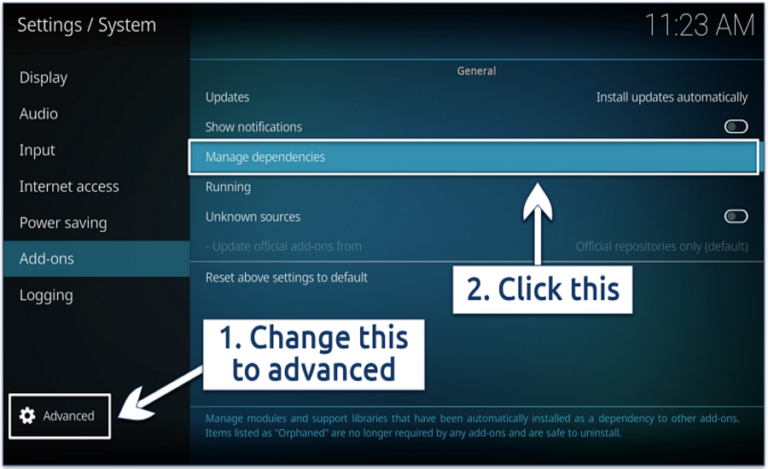How to Improve Humidity in Your Home: A Comprehensive Guide
Humidity is an often-overlooked element in creating a comfortable living environment. The right humidity level can enhance the quality of indoor air, support health, and protect your home’s structure and furnishings. This guide will explore various methods to improve humidity in your home, addressing the importance of maintaining optimal humidity levels and offering practical solutions to achieve them.
Understanding Humidity: The Basics
Humidity refers to the amount of water vapor present in the air. It is typically measured as a percentage, known as relative humidity (RH), which compares the current amount of moisture in the air to the maximum amount that air can hold at a given temperature. Ideal indoor humidity levels usually fall between 30% and 50%. However, this can vary depending on the season, location, and personal comfort preferences.
High humidity levels can lead to mold growth, dust mites, and discomfort, while low humidity can cause dry skin, respiratory issues, and damage to wooden furniture and flooring. Therefore, understanding and controlling humidity levels in your home is crucial for both comfort and health.
The Importance of Maintaining Optimal Humidity Levels
Maintaining the right humidity levels in your home has several significant benefits. Here are a few key reasons why optimal humidity is essential:
- Health Benefits: Proper humidity levels can reduce respiratory issues, allergies, and asthma symptoms. Low humidity can dry out the mucous membranes in the nose and throat, making it easier for viruses and bacteria to thrive. In contrast, maintaining humidity levels between 30% and 50% can help prevent these problems.
- Comfort: Humidity plays a crucial role in how comfortable you feel in your home. High humidity can make you feel hotter, while low humidity can make the air feel cooler than it is. By managing humidity levels, you can enhance your overall comfort throughout the year.
- Preservation of Property: Maintaining proper humidity levels is vital for the preservation of your home and belongings. Excess moisture can lead to mold growth and structural damage, while low humidity can cause wood to crack and split. By improving humidity levels, you can protect your home’s structure and extend the lifespan of your furnishings.
- Energy Efficiency: Managing humidity can also contribute to energy savings. Proper humidity levels can reduce the need for excessive heating or cooling, allowing your HVAC system to work more efficiently. This can result in lower energy bills and a reduced carbon footprint.
Signs of Low Humidity in Your Home
Recognizing the signs of low humidity is the first step toward addressing the issue. Here are some common indicators that your home may suffer from insufficient humidity:
- Dry Skin and Eyes: If you notice that your skin feels dry, or you frequently experience dry eyes or throat irritation, it could be a sign of low humidity. Dry air can strip moisture from your skin and mucous membranes.
- Static Electricity: A noticeable increase in static electricity in your home, such as shocks when touching metal surfaces or frequent static cling in clothing, can indicate low humidity.
- Cracked Wood and Furniture: Wooden furniture, flooring, and musical instruments may crack or warp when humidity levels drop. If you observe signs of damage, it may be time to address humidity in your home.
- Increased Allergy and Asthma Symptoms: Low humidity can exacerbate allergy and asthma symptoms, leading to increased coughing, sneezing, and difficulty breathing. If you or your family members notice worsening symptoms, check your humidity levels.
- Peeling Paint or Wallpaper: Low humidity can cause paint and wallpaper to dry out and peel. If you see signs of damage, consider checking the humidity in your home.
By being aware of these signs, you can take proactive steps to improve humidity levels in your home.
Methods to Improve Humidity in Your Home
There are several effective methods to increase humidity levels in your home. These solutions can be tailored to your specific needs and circumstances, allowing you to find the best approach for your situation.
1. Use a Humidifier
One of the most efficient ways to add moisture to the air is by using a humidifier. These devices are designed to release water vapor into the air, effectively raising humidity levels. Humidifiers come in various sizes and types, including:
- Evaporative Humidifiers: These devices use a fan to blow air through a wet wick, releasing moisture into the air. They are self-regulating and can maintain consistent humidity levels.
- Steam Vaporizers: These units heat water to produce steam, which is then cooled slightly before being released into the room. They can effectively increase humidity but may pose a burn risk if not used carefully.
- Ultrasonic Humidifiers: Using ultrasonic vibrations, these humidifiers create a fine mist that is released into the air. They are quiet and energy-efficient, making them a popular choice for bedrooms.
When choosing a humidifier, consider the size of the space you want to humidify and the features you need, such as adjustable humidity settings, filters, or automatic shut-off options. Regular maintenance, including cleaning and changing filters, is essential to ensure the device operates effectively and safely.
2. Place Water Basins or Bowls
If you prefer a more natural approach, placing water basins or bowls around your home can effectively increase humidity levels. As the water evaporates, it will add moisture to the air. Here are some tips for using this method:
- Location: Place water bowls near heat sources, such as radiators or heating vents. The warmth will accelerate evaporation, helping to humidify the air more effectively.
- Size and Number: Use larger bowls or multiple smaller ones to increase the surface area for evaporation. The more water exposed to air, the greater the humidity boost.
- Decorative Touch: Consider using decorative bowls or vases filled with water. This approach not only adds humidity but can also enhance your home’s aesthetic.
3. Indoor Plants
Houseplants can significantly contribute to improving indoor humidity levels. Plants naturally release moisture through a process called transpiration, where water is absorbed by the roots and evaporates through small openings in their leaves. Here are a few tips on how to use indoor plants for humidity improvement:
- Choose the Right Plants: Opt for plants known for their humidity-boosting qualities, such as peace lilies, spider plants, or ferns. These plants are particularly effective at releasing moisture into the air.
- Group Plants Together: Placing several plants in one area can create a more humid microclimate, as the combined transpiration from multiple plants increases moisture levels.
- Water Regularly: Ensure your plants receive adequate water, as healthy plants will release more moisture into the air. Keep an eye on soil moisture and adjust your watering routine as needed.
4. Use a Stove or Kettle
Another effective method for increasing humidity is to use your kitchen stove or kettle. Boiling water creates steam that can quickly elevate humidity levels in your home. Here’s how to make the most of this method:
- Boil Water: Bring a pot of water to a boil on the stove. As the water evaporates, it will release steam into the air. For added benefit, you can also add herbs or spices to the water for a pleasant aroma.
- Kettle Method: If you have a kettle, consider leaving it on low heat to let the steam escape into your kitchen and surrounding areas. This method can provide continuous humidity without requiring much effort.
- Safety First: Always monitor boiling water closely to avoid spills and burns. Turn off the heat when you reach the desired humidity level to prevent excessive steam.
5. Ventilation and Airflow
Improving ventilation and airflow in your home can also help manage humidity levels. While it may seem counterintuitive, allowing fresh air to circulate can balance indoor humidity levels, especially in the warmer months. Here are a few strategies to consider:
- Open Windows: During times of higher outdoor humidity, such as early mornings or late evenings, open windows to allow fresh air to flow in. This can help increase humidity levels naturally.
- Use Exhaust Fans: While exhaust fans are primarily designed to reduce humidity, they can help maintain balanced moisture levels in your home. Using them in areas like kitchens and bathrooms can prevent excess moisture buildup.
- Cross-Ventilation: Create cross-ventilation by opening windows on opposite sides of your home. This allows air to flow freely, balancing humidity levels and improving indoor air quality.
6. Control Heating Systems
Heating systems can significantly impact indoor humidity levels, especially during the winter months when indoor air tends to dry out. Here are some tips for managing your heating system to improve humidity:
- Use Humidistats: Install a humidistat in conjunction with your heating system. This device can help monitor humidity levels and automatically adjust the system to maintain optimal conditions.
- Adjust Thermostat Settings: Set your thermostat to a lower temperature to reduce the drying effect of heat. This can help maintain more comfortable humidity levels in your home.
- Combine Heating with Humidification: If your heating system allows, consider integrating a humidifier into your HVAC system. This approach can provide a consistent humidity level throughout your home.
7. Daily Activities
Daily activities can also contribute to increasing humidity in your home. Incorporating certain practices into your routine can create a more humid environment. Consider these ideas:
- Take Hot Showers: Taking hot showers releases steam into the air, which can help increase humidity levels in your bathroom and adjoining areas. Keep the bathroom door open while showering to allow steam to spread throughout your home.
- Cook More Often: Cooking, especially boiling or steaming food, generates moisture in the air. Prepare meals that require boiling or steaming to naturally enhance humidity levels.
- Dry Laundry Indoors: If possible, hang wet laundry indoors to dry. As the water evaporates, it will add moisture to the air, helping to improve humidity levels.
8. Insulate Your Home
Proper insulation is essential for maintaining consistent indoor humidity levels. Insulating your home can help prevent moisture loss during dry months and minimize excess humidity during wet months. Here are some insulation tips:
- Seal Drafts: Identify and seal any drafts in windows and doors. This prevents dry air from entering your home and helps maintain a stable indoor environment.
- Insulate Walls and Attics: Ensure that your walls and attic are properly insulated to prevent moisture from escaping or entering. Good insulation keeps your home comfortable year-round.
- Use Vapor Barriers: Consider installing vapor barriers in basements and crawl spaces to prevent moisture from entering your home. This can help manage indoor humidity levels effectively.
Additional Tips for Maintaining Humidity
In addition to the methods outlined above, here are a few additional tips to help you maintain optimal humidity levels in your home:
- Monitor Humidity Levels: Invest in a hygrometer to monitor humidity levels in your home. Regularly checking these levels allows you to take action when humidity is too low or high.
- Seasonal Adjustments: Be mindful of seasonal changes in humidity levels. You may need to adjust your methods and devices depending on the time of year.
- Consult a Professional: If you struggle to maintain proper humidity levels in your home, consider consulting a professional HVAC technician. They can provide guidance and recommendations tailored to your specific situation.
Conclusion
Improving humidity levels in your home is essential for creating a comfortable and healthy living environment. By understanding the importance of humidity and employing various strategies to enhance moisture levels, you can enjoy the benefits of better air quality, increased comfort, and the preservation of your home and belongings. Whether you choose to invest in a humidifier, incorporate houseplants, or make simple lifestyle adjustments, each step you take toward improving humidity will contribute to a more pleasant living space. By taking a proactive approach and monitoring humidity levels, you can ensure your home remains a sanctuary of comfort, health, and well-being.



